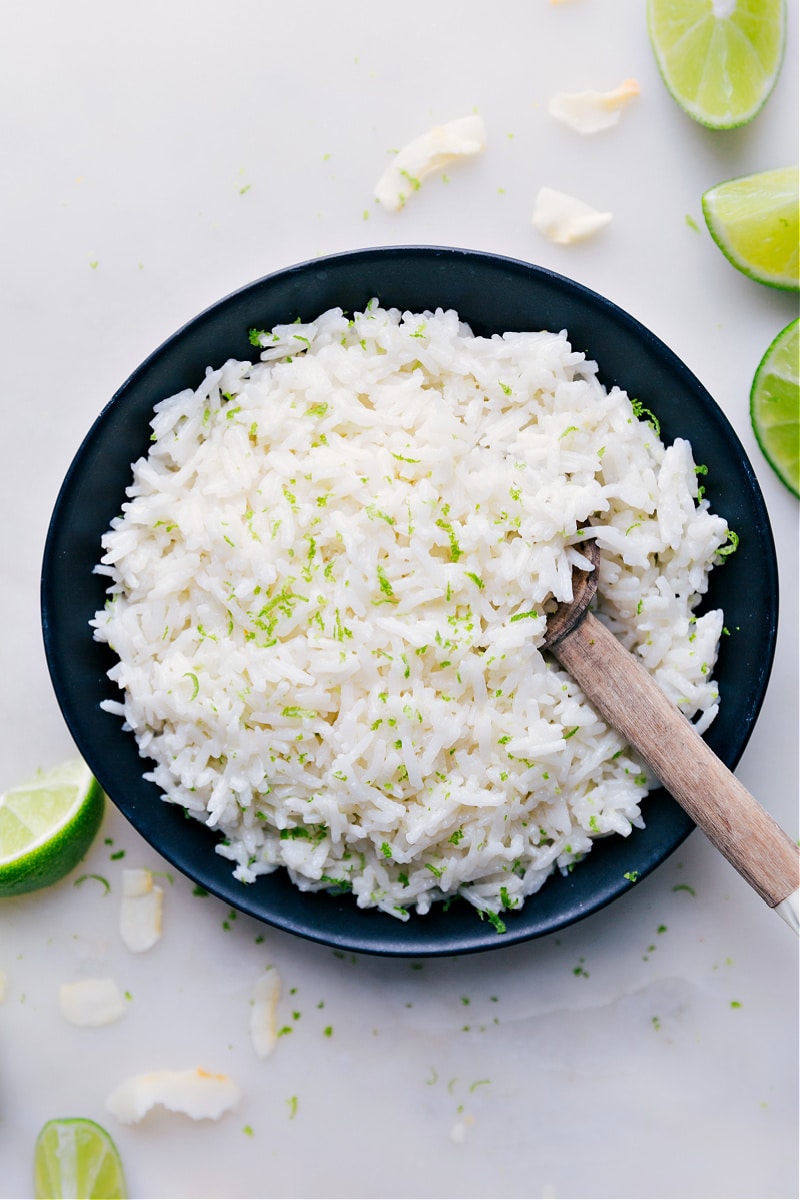
Coconut Rice is such a fun switch-up from typical rice — it makes a great side dish or a fantastic base to so many dishes! This Coconut Rice recipe is rich with a nice creaminess and slight sweetness. It has a lovely, yet subtle, coconut flavor with a hint of freshness from the lime.
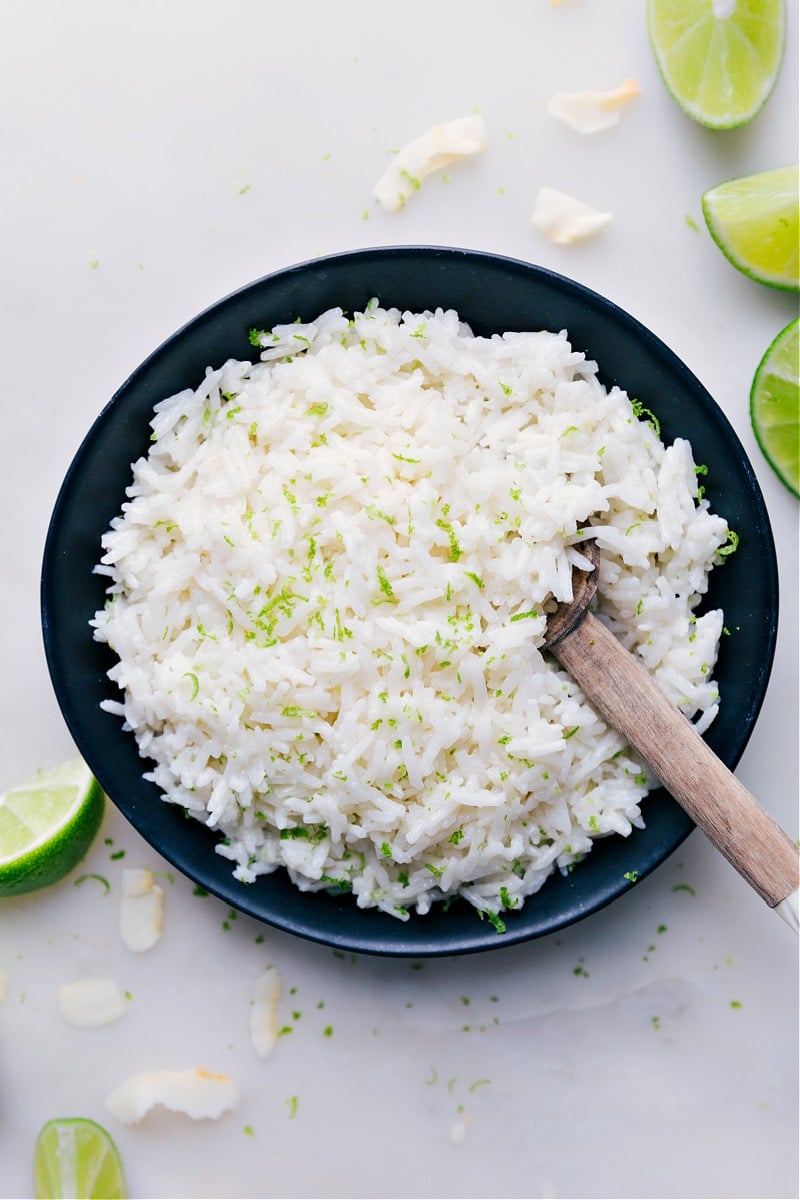
Coconut Rice
Coconut Rice is such a great side dish or base and has practically limitless applications! It’s definitely a recipe you want in your arsenal and this particular recipe is my favorite!
I struggled for years getting the quantities just right to avoid sticky/gluey coconut rice while still infusing the rice with plenty of coco-nutty flavors, but the code has been cracked and I couldn’t be more excited to share this recipe with you all. Throughout the testing, it was important that the rice remained a very simple recipe (who wants to spend loads of time on a side dish?!) and I think you’ll be pleasantly surprised at just how easy it is to prepare.
As written, this rice is intended to be served alongside some kind of grilled/cooked meat or with some saucy beans. So if you’re looking for a more “jazzed-up” coconut rice that can stand on its own, be sure to check out the “Variations” section mid-way down this post for a springboard of ideas. Enjoy!
QUICK TIP
What Is Coconut Rice?
Coconut Rice is a type of rice side dish that is prepared by being cooked in a base of coconut milk (or coconut flakes), water, salt, and sometimes sugar, raisins, or other additions. This rice has a creamy texture with a mild coconut flavor with a subtle sweetness.
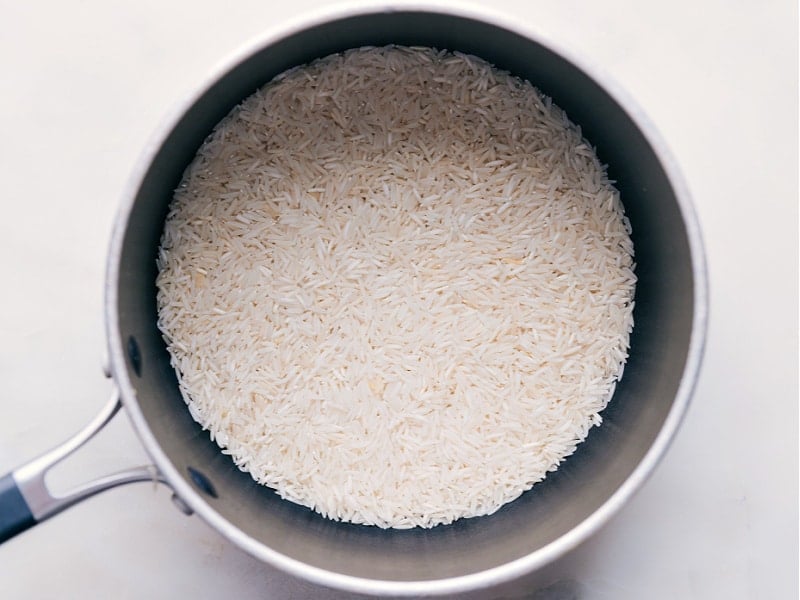
How To Make Coconut Rice
Coconut Rice is simple to make with the right quantities of milk, water, and rice. Follow the steps below for perfect coconut rice every single time!
Step One: Measure
Measure out one leveled cup of basmati rice. Basmati is hands down our favorite to use — it has a wonderful flavor and aroma that pairs perfectly with the coconut milk. It also comes out so nicely — no sticky or gluey grains here!
Basmati rice can be found near other types of rice in the grocery store — no stops at specialty stores required.
Step Two: Combine
Add the measured rice to a pot along with some fine sea salt. Without salt, the flavors will fall flat, so don’t forget this ingredient! Keep in mind that not all salts will season the same, if you’re using table salt, you’ll want to add slightly less.
Once we’ve got rice and salt in the pan, it’s time to add coconut milk and water. Stir everything together.
QUICK TIP
Measure coconut milk in cup measurements (or grams), for the most accurate measurement. Give the can of coconut milk a good shake before opening to measure!
Step Three: Cook
Place the pot over high heat and bring to a boil. As soon as the mixture boils, reduce the heat to low and cover the rice with a fitted lid. Allow to simmer for 13-18 minutes, or until liquid is absorbed and grains of rice are tender.
Step Five: Let Stand and Flavor
Remove from heat, keep covered, and let stand for 10-15 minutes; don’t rush or it will be sticky! Fluff the rice with a fork and then add in desired flavorings (for this recipe we add in the zest and juice of one lime). Gently stir to incorporate and enjoy!
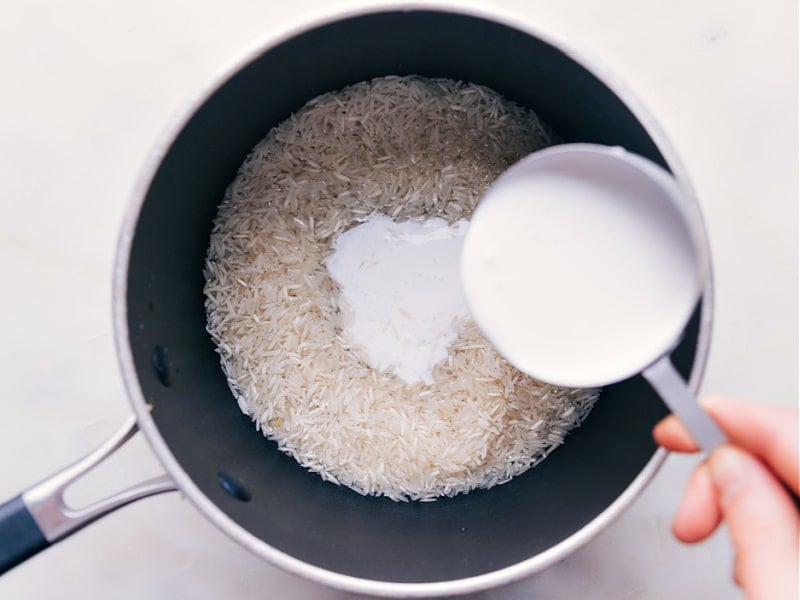
VARIATIONS
Coconut Rice Flavoring Ideas
As a base for grilled meat or seafood, we prefer to keep the rice fairly simple by adding only lime juice and zest. If you want this rice to be more of a side dish, here are some mix-in suggestions that add some more oomph.
- Diced ripe mangos (We love honey mangoes in this rice!) and black beans
- Diced and sautéed medley of sweet bell peppers and carrots or peas (think confetti rice)
- Fresh, ripe avocado
- Diced ripe pineapple and kidney beans
- Fresh herbs like cilantro or parsley in addition to the lime juice
- Nuts like toasted macadamia nuts, sliced almonds, or crushed peanuts
- Golden raisins
- Toasted coconut (sweetened for sweeter rice, unsweetened for more savory)
If you’ve never toasted coconut, don’t fret–it’s very easy to do! The toasted coconut not only tastes better, but it also makes for a gorgeous presentation and flecks of color throughout the rice. Here’s a step-by-step guide on how to toast coconut.
This rice is not intensely coconut flavored; it’s there, but not sweet in the way a coconut cream pie is! For a more intense coconut flavor, try using coconut water instead of regular water, mixing in a few drops of pure coconut extract, and/or stirring through toasted coconut.
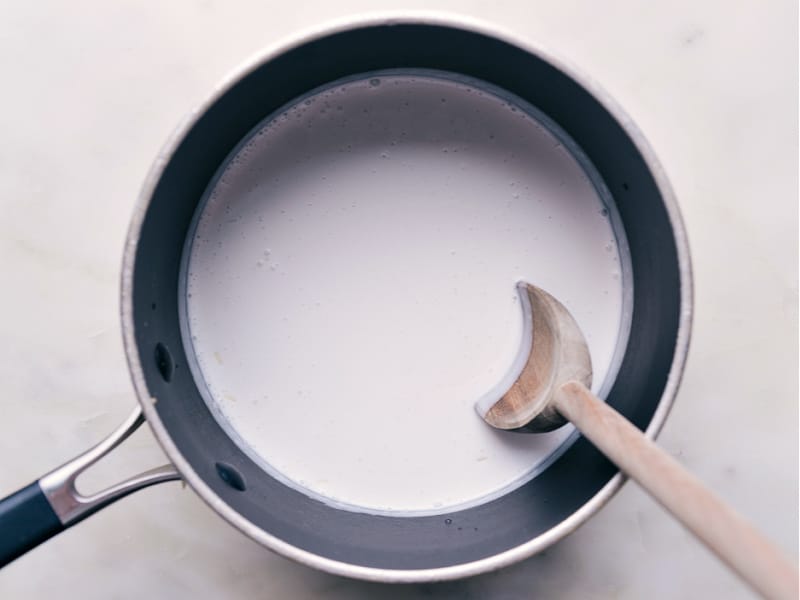
What To Eat With Coconut Rice
Coconut Rice pairs wonderfully with tropical dishes. We love it with grilled chicken topped with grilled pineapple or mango salsa. Additionally, Coconut Rice pairs really nicely with seafood. We especially love it with this Blackened Tilapia with a Pineapple Salsa — yum! This rice also pairs well with Thai curries — especially spicier curries, since the sweetness of the rice will slightly offset that!
Some of our favorite recipes to pair with coconut rice: Pineapple Chicken, Mango Chicken, Teriyaki Chicken Skewers, Cilantro Lime Chicken, Teriyaki Chicken, or these Black Bean Bowls.
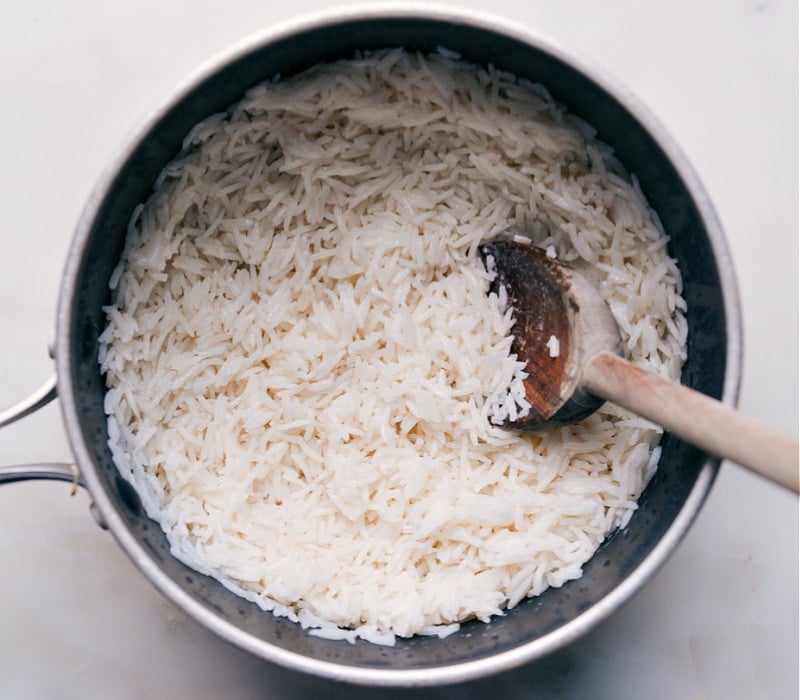
Coconut Rice Tips
- Use basmati rice for best results; this recipe always turns out best with this variety of rice.
- Don’t rush the resting of the rice. Letting the rice stand after it’s cooked is crucial to achieving optimum texture. The resting period ensures the rice won’t be clumpy and the grains will remain more distinct. No mushy, gluey rice here!
- Use kitchen tools to make the dressing preparation easier. Use a microplane (like this one) to zest only the very outside bright green part of the lime(s). Avoid the white pith below the peel which is bitter. This citrus juicer makes juicing the limes a breeze!
- To ensure evenly cooked rice, be sure the liquids come to a boil before reducing the heat to a simmer.
- I highly recommend using full-fat coconut milk for the best flavor and texture in this rice. Lite coconut milk doesn’t thicken as nicely and won’t result in the rich full flavor that regular coconut milk provides.
QUICK TIP
It can be overwhelming to navigate coconut milk options in the grocery store. Look for shelf-stable, unrefrigerated cans of coconut milk. You’ll find canned coconut milk on the international aisle, with Latin or Asian products. Here’s an article outlining the best brands to use. I personally use Thai Kitchen® or Imperial Dragon® since I can find them easily at my local grocery store.
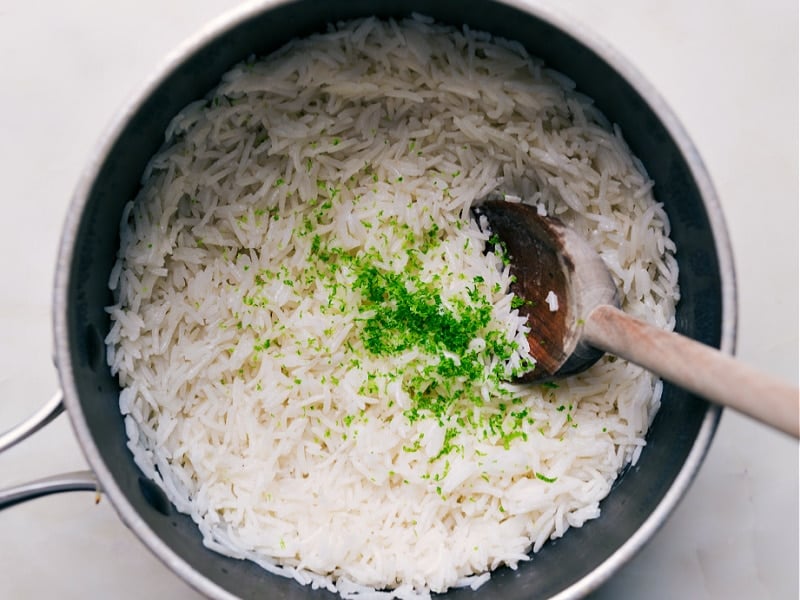
STORAGE
Storage
Once Coconut Rice has fully cooled, store it in an airtight container in the fridge for 4-6 days. Here are a few ways for how to reheat leftovers — in the microwave, stovetop, or oven.
To freeze: Let it fully cool and then put it in freezer-safe containers or bags. Freeze for up to 6 months. To reheat, transfer the rice to a microwave-safe container, cover with a damp paper towel, and microwave until heated through, stirring a few times while reheating. You may need to add a tablespoon or more of water into the container to keep the rice from drying out.
More great side dishes
Coconut Rice
Coconut Rice is such a fun switch-up from typical rice — it makes a great side dish or a fantastic base to so many dishes! The rice is rich with a nice creaminess and slight sweetness. It has a lovely, yet subtle, coconut flavor with a hint of freshness from the lime.
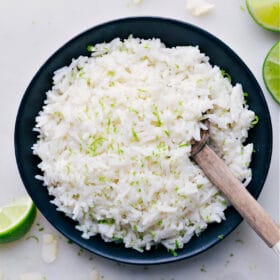
Coconut Rice

Coconut Rice is such a fun switch-up from typical rice — it makes a great side dish or a fantastic base to so many dishes! The rice is rich with a nice creaminess and slight sweetness. It has a lovely, yet subtle, coconut flavor with a hint of freshness from the lime.
Ingredients
- 1 cup (185g) basmati rice Note 1
- 3/4 teaspoon fine sea salt
- 1 can (13.6 oz.; 403g) full-fat coconut milk Note 2
- 1/2 cup (100g) water
- 1-2 large lime(s) (1 teaspoon zest & 2 tablespoons juice)
Instructions
-
COMBINE: Combine 1 cup basmati rice, salt to taste (I add 3/4 teaspoon fine sea salt), 1/2 cup water, and 1-1/2 cups coconut milk in a medium-sized pot. Mix together.
-
COOK: Place the pot over high heat and bring to a boil. As soon as the mixture boils, reduce the heat to low and cover the rice with a fitted lid. (To ensure evenly cooked rice, be sure the liquids come to a boil before reducing the heat to a simmer.) Allow to simmer for 13-18 minutes, or until liquid is absorbed and grains of rice are tender. (Troubleshooting: liquid has absorbed but rice isn’t quite tender? Add a few more tablespoons of water. Too much liquid still? Slightly increase the heat.)
-
LET REST: Remove pot from heat, keeping it covered, and let stand for 10-15 minutes; don’t rush or it will be sticky (Note 3)! Fluff the rice with a fork and then add in lime juice and zest (Note 4). Gently stir to incorporate, taste for additional salt or lime juice, and enjoy!
Recipe Notes
Note 2: Coconut milk: Look for shelf-stable, unrefrigerated cans of coconut milk. I recommend measuring in cups — you want exactly 1 and 1/2 cups. You’ll find canned coconut milk on the international aisle, with Latin or Asian products. I personally use Thai Kitchen® or Imperial Dragon®. I highly recommend using full-fat coconut milk for the best flavor and texture in this rice. Lite coconut milk doesn’t thicken as nicely and won’t result in the rich full flavor that regular coconut milk provides.
Note 3: Resting the rice: Letting the rice stand after it’s cooked is crucial to achieving optimum texture. The resting period ensures the rice won’t be clumpy and the grains will remain more distinct. No mushy, gluey rice here!
Note 4: Zesting limes: When zesting the limes, avoid the white pith of the limes — this is very bitter. Zest only the very outside green part of the lime for this recipe.
Nutrition information is based on a 1/2-cup serving. There are 6 total servings in the 3 cups.
Nutrition Facts
Serving: 1serving | Calories: 295kcal | Carbohydrates: 65g | Protein: 6g | Fat: 1g | Saturated Fat: 1g | Polyunsaturated Fat: 1g | Monounsaturated Fat: 1g | Sodium: 588mg | Potassium: 114mg | Fiber: 2g | Sugar: 1g | Vitamin A: 11IU | Vitamin C: 7mg | Calcium: 31mg | Iron: 1mg
We do our best to provide accurate nutritional analysis for our recipes. Our nutritional data is calculated using a third-party algorithm and may vary, based on individual cooking styles, measurements, and ingredient sizes. Please use this information for comparison purposes and consult a health professional for nutrition guidance as needed.



